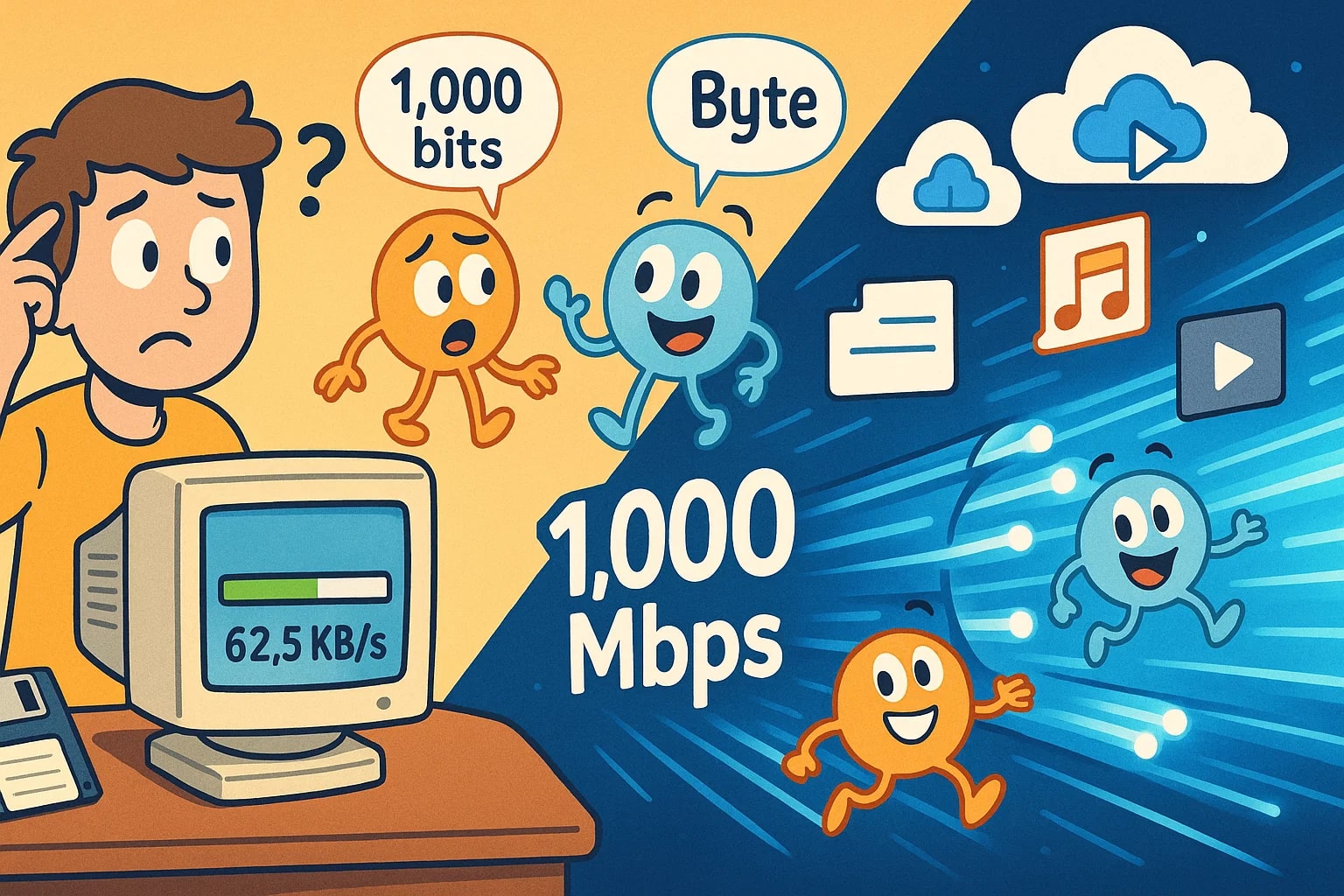kilobit to byte – How to convert kbit to B
Kilobits are everywhere in digital communication — they power everything from your internet speed to how fast a smart speaker responds to your command. But when it comes to file sizes or actual storage, we usually think in bytes. So when you're trying to compare network speeds to file sizes, converting kilobits (kbit) to bytes (B) gives you the clarity you need.
Let’s walk through the conversion and what it actually means when applied to real-world scenarios.

What is a kilobit (kbit)?
A kilobit is equal to 1,000 bits, and it’s commonly used in data transmission rates — not storage. Internet providers, streaming services, and digital radios often measure data flow in kilobits per second (kbps). It’s a useful unit when dealing with continuous streams of information, like audio or video.
You’ll see kilobits mentioned in:
-
Download/upload speed tests
-
Network speed plans from ISPs
-
Streaming quality settings (audio, video)
-
Bluetooth and radio protocols
What is a byte (B)?
A byte consists of 8 bits and is the standard unit for measuring stored digital data. It’s used in virtually everything: file sizes, memory capacity, software installation packages, and more. Text files, documents, photos, and videos are stored and measured in bytes or their multiples — kilobytes, megabytes, and beyond.
When you download or save a file, you’re counting in bytes — but when you stream or transfer, you’re usually counting in bits or kilobits.
How to convert kilobit to byte
Since:
1 kilobit = 1,000 bits
1 byte = 8 bits
You can convert kilobits to bytes with:
bytes = (kilobits × 1,000) ÷ 8
which simplifies to:
bytes = kilobits × 125
So to go from kilobits to bytes, just multiply by 125.
A movie trailer streaming at 2,000 kilobits per second uses:
2,000 × 125 = 250,000 bytes every second.
A voice call on a low-bandwidth codec running at 16 kilobits per second would consume:
16 × 125 = 2,000 bytes per second.
A game update downloading at 1,200 kilobits per second means your file is arriving at a rate of:
1,200 × 125 = 150,000 bytes per second.
For on-the-spot conversions, use our Data Storage Converter or explore other digital units in the full Conversion tools catalog.
Did you know?
-
Streaming standard-definition video requires around 1,000 to 1,500 kbps, which translates to 125,000–187,500 bytes per second.
-
In the early 2000s, DSL internet plans advertised 256 or 512 kbps — that’s just 32,000 to 64,000 bytes per second.
-
Many radio broadcast systems use bitrates of 128–192 kbps, especially for digital music streaming and podcasting.
-
File-sharing programs in the dial-up era had to estimate download time using kilobits, but users often misunderstood it as kilobytes, leading to massive confusion.
-
Some IoT devices communicate at under 100 kbps, keeping byte-level data usage ultra-low to conserve battery.
From dial-up days to fiber optics – where this conversion shaped expectations
In the early 2000s, internet speeds were a mystery to most users. Providers advertised download rates in kilobits, but users were saving files in kilobytes, creating a mismatch that confused just about everyone.
For example, if your internet speed was 512 kbps, you might expect to download 512 kilobytes per second. But with the conversion, that’s actually:
512 × 125 = 64,000 bytes per second, or 62.5 kilobytes per second.
This gap shaped an entire generation’s expectations about download times. People watched progress bars crawl across screens for hours, unaware that kilobits and kilobytes weren’t interchangeable. As broadband took over and speeds climbed into megabits, the conversion still mattered — just on a larger scale.
Today, fiber connections can reach speeds of 1,000 Mbps or more, but bytes still define the actual content you receive. Understanding how kilobits translate into bytes gives clarity when streaming, downloading, or configuring systems for real-time data.

One simple step to translate speed to size
Whether you're configuring a network, planning a download, or checking how long a stream will take, converting kilobits to bytes tells you how much data is actually moving.
Just remember the shortcut:
bytes = kilobits × 125
You can run the math manually or jump into our Data Storage Converter for instant answers. Looking for other conversions? Jetcalculator’s full library of Conversion tools has everything from bits to terabytes — and everything in between.

